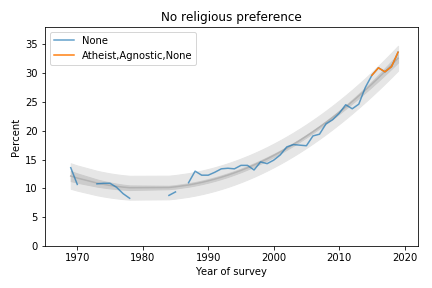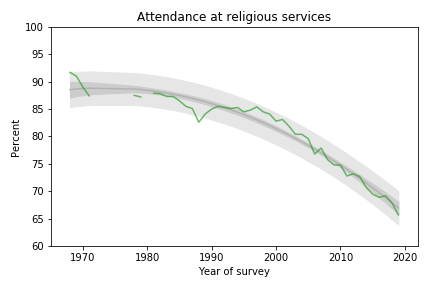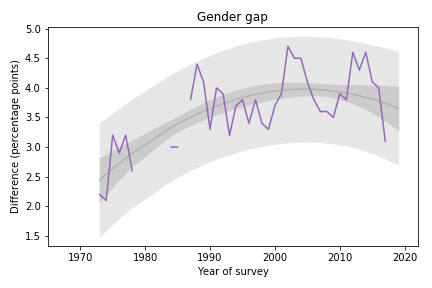The Retreat From Religion Continues
A few years ago I wrote an article for the Scientific American blog where I used data from the General Social Survey (GSS) to describe changes in religious affiliation in the U.S.
And in this longer article I described changes in religious belief as well, including belief in God, interpretation of the Bible, and confidence in religious institutions.
Those articles were based on GSS data released in 2017, which included interviews up to 2016. Now the GSS has released additional data from interviews conducted in 2017 and 2018, including young adults born in 1999 and 2000.
So it’s time to update the results.
Religious affiliation by cohort
The following figure shows religious affiliation by year of birth.
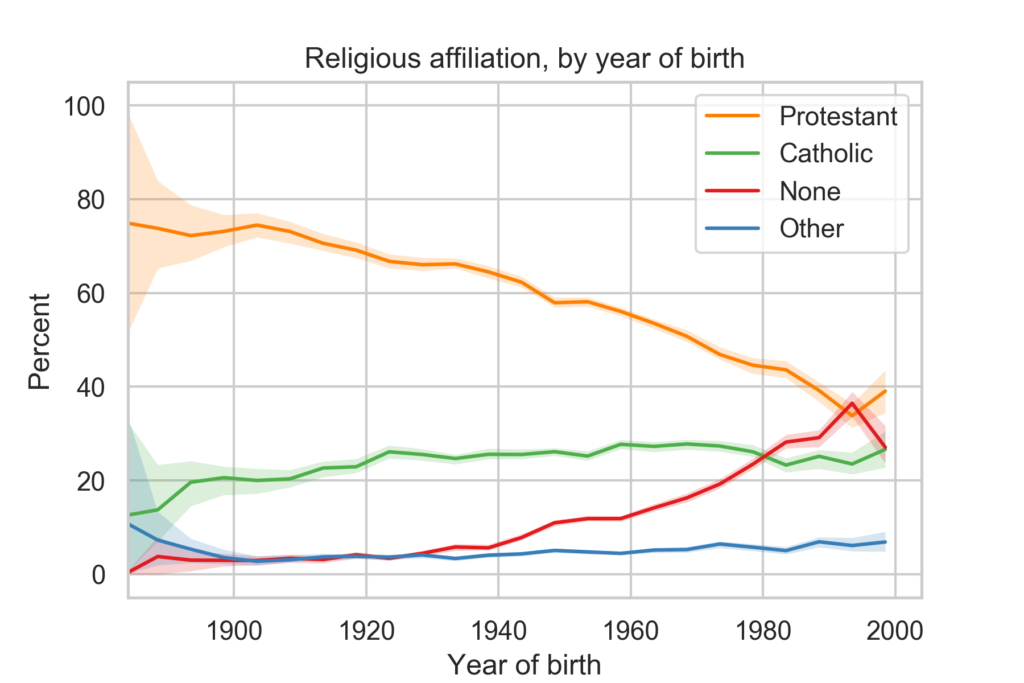
The youngest group in the survey, people born between 1996 and 2000, depart from several long-term trends:
- They are more likely to identify as Protestant than the previous cohort, and slightly more likely to identify as Catholic.
- And they are less likely to report no religious preference.
There are only 201 people in this group, so these results might be an anomaly. Data from other sources indicates that young adults are less religious than older groups.
Religious affiliation by year
The following figure shows religious affiliation by year of interview along with predictions based on a simple model of generational replacement.
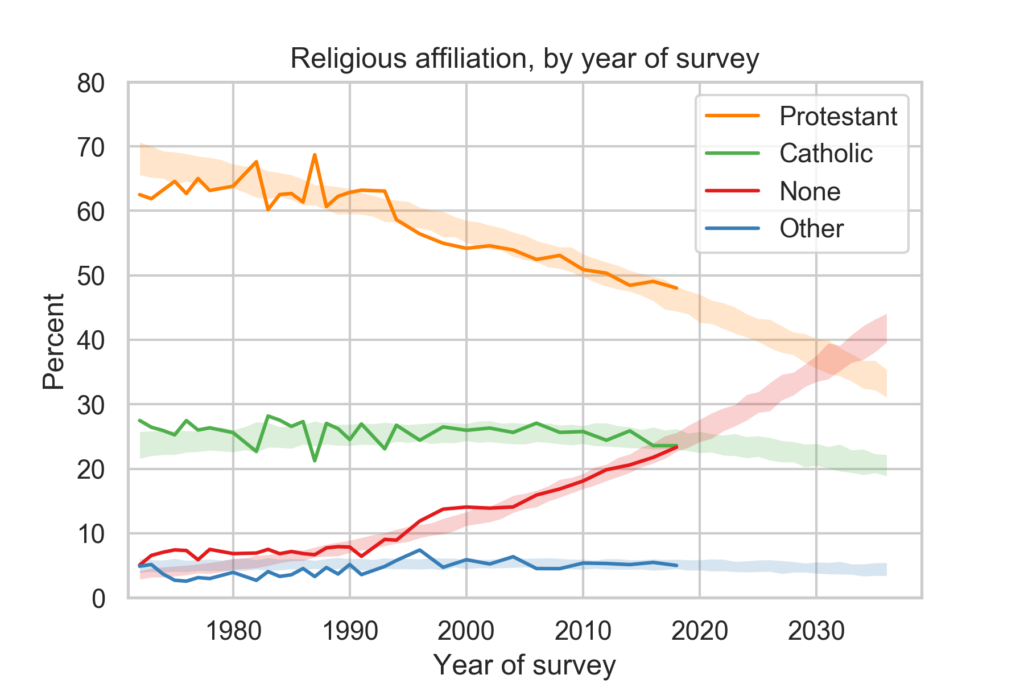
Despite the reversal of trends in the previous figure, the long-term trends in religious affiliation continue:
- The fraction of people who identify as Protestant or Christian is declining and accelerating.
- The fraction who identify as Catholic has started to decline.
- The fraction with no religious affiliation is increasing and accelerating.
Based on the previous batch of data, I predicted that there would be more Nones than Catholics in 2020. With the most recent data, it looks like the cross-over might be ahead of schedule.
On these trends, there will be more Nones than Protestants sometime after 2030.
In the next article, I’ll present related trends in religious belief and confidence in religious institutions.
